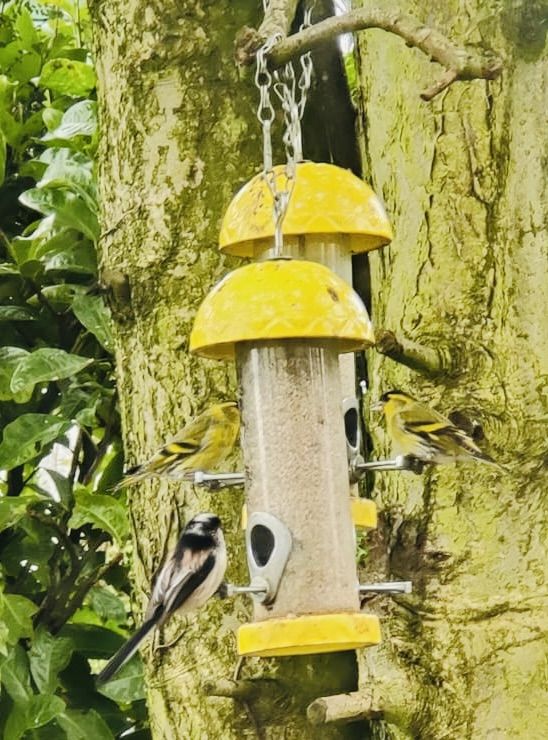IT’S not quite at the level of St Francis of Assisi. The famous saint used to preach to the birds in the forest, who would fall silent and gather around him, intrigued by his powerful voice.
But the patron saint of animals and the environment sprung to mind this week because Dúlra didn’t have to do much to see some incredible birdlife – they just came to him.
Black guillemots are one of the new treasures of the Irish coast and what’s really different about them is that they don’t seem to mind people. Take a dander along the water down at the Titanic Quarter and you’ll see a couple of pairs floating on the calm port water. Come breeding season a pair actually nests on a ledge just below the ‘Big Fish’ – you can see the parents’ heads sticking out as you stand up above just a few feet away.
It’s worth travelling to see, but why go to all that effort when the birds will simply come to you? Dúlra was at work when a bird suddenly landed on the windowsill right next to his workstation. He turned around and came face to face with the black guillemot of Belfast Lough! Dúlra just managed to get his phone out for a picture before it dropped back into the water. The black guillemot – foracha dhubh in Irish – is an amazing seabird, as tough as they come. It might seem like they like the calm waters of Belfast Lough, but only up to a point. Because the colder it is, the better.
These birds have only recently colonised Ireland, moving south from the Arctic areas they love. But why would any bird prefer a cold place when there are plenty of hotter places to live? The answer is food. It eats mainly Arctic cod, which thrive in ice-covered waters. But it’s clearly an adaptable bird, and it’s taken to the Irish coast like, well, like a fish to water.
At home next morning, Dúlra was munching on his granola bar while gazing out the window at the garden birds. And yet again, he couldn't get his phone out quickly enough. If you look closely, you’ll see three birds in this picture, all on the one feeder hanging from the holly tree.
At the top on either side are two brilliantly green male siskins and it’s a real treat to have this bird of forest treetops in any garden. But it was the bird below them that really is a rarity, at least in gardens. The long-tailed tit – meantán earrfhada in Irish – is also a bird of the deep forest, which we don’t have many of these days. But in winter they’ll gather together in a family unit – cousins and all – and go on a tour of the city below. They don’t stay in one place long as they simply refuse to be garden birds. They’re always on the move and might spend just 30 seconds in a garden as they sweep through, on their way across the city.
But when they arrive, it’s like the whole garden has come alive. There’s movement on every branch, in every hedge. They’ll take turns nibbling at a feeder like this one, but just for a few seconds. It’s like they have an itch that they just have to scratch and they can’t keep still.
In a minute they were gone, but they left Dúlra breathless. They’ll speed through most of our gardens before spring, and if you’re lucky you’ll be looking out the window when they do.
In a few weeks they’ll be breaking off into pairs and setting about building a nest, which is a work of art to rival another Italian great, Michelangelo. They use more than 6,000 tiny lichens and mosses to build the nest which is like a tennis ball suspended from brambles. It’s held together by a mesh of spiders’ silken thread. Inside it’s lined with 2,000 downy feathers.
And it's so well hidden that to find one, you'd probably need the intercession of the patron saint of animals and the environment.
•If you’ve seen or photographed anything interesting, or have any nature questions, you can text Dúlra on 07801 414804.







